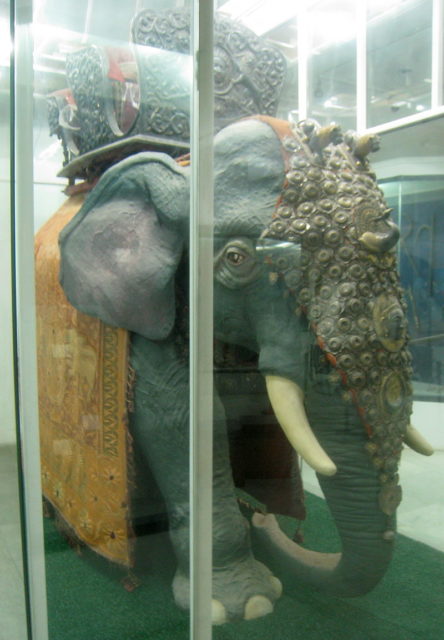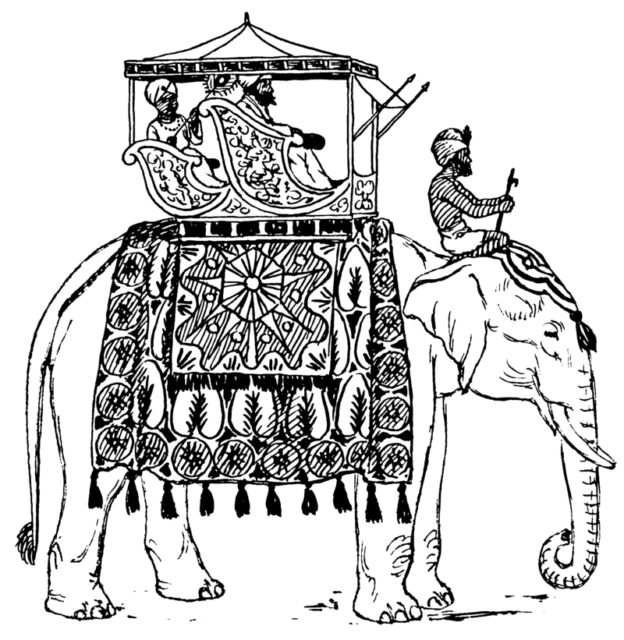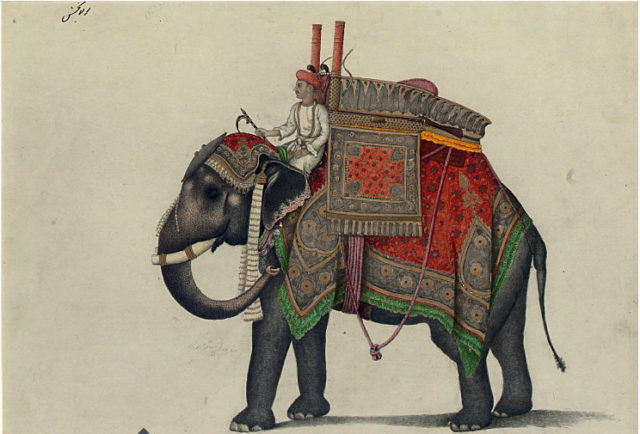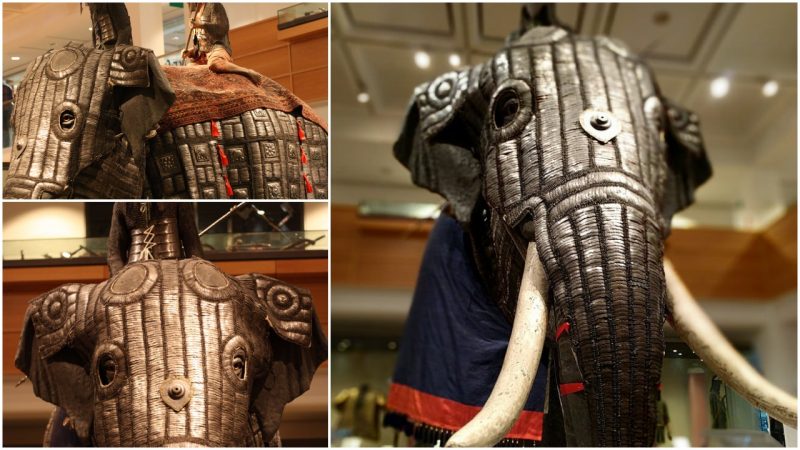Elephants have been used in warfare since around 1100 BC. When Alexander the Great fought against the Persian leader Darius III at Gaugamela in Northern Iraq, there were fifteen Asian elephants there to assist the Persians in the battle. Alexander’s forces, never having seen an elephant before, were initially afraid of the large beasts, but even so, Alexander’s army won the day.
When Alexander invaded Punjab, India in 326 BC, King Porus responded with over 100 archers and spear throwers riding atop elephants. Having experienced elephant warfare earlier, Alexander’s troops were not as intimidated as they were before. They were ordered to attack the elephants with javelins and spears and were able to drive the elephants out of the ranks to defeat the Indian troops. Alexander captured about 80 elephants to use in his own army.

In 280 BC, during the Pyrrhic Wars, Romans had their first encounter with war elephants. The Roman horses were especially fearful and often turned back from battle. Because of this, the Romans learned how to make devices to defeat the huge animals. At the Battle of Asculum in 270 BC, the Romans employed fire pots and spiked weapons that injured the elephant’s soft foot pads.
One of the most famous incidents of elephant warfare was in 202 BC when Hannibal fought against the Roman general Publius Cornelius Scipio Africanus in the Second Punic War. Elephants were employed to charge the enemy in battle, often grabbing soldiers with their trunks and flinging them away. Their large feet made it easy to stomp on fleeing soldiers. They were also used to move heavy equipment, batter fortifications, and transport soldiers across rivers and streams. Their thick skin easily resisted arrows and spears.

To add to that, Indians began outfitting their elephants in armor. Most had elaborately-weaved face masks that covered the ears and most of the elephant’s trunk. Holes were fashioned to allow the elephant to see and for their tusks to protrude from the mask. The armor continued across the animal’s back and hung down to the knees. It was made with a variety of different materials – sometimes steel squares woven together with cloth or leather, or sometimes just padded cloth or leather with no steel plates.
Examples of elephant armor can be seen in many museums across India, and these show the great care taken in their design. Some were encrusted with semi-precious stones and jewels, with colorful tassels hanging from the corners of the body armor. Many had golden threads woven into the cloth, and a few even had spikes protruding from the armor to cause even more injury to the enemy forces. They also had spiked leg cuffs to protect the animal from ax wielders attempting to injure the elephant’s legs. Some particularly beautiful examples of war elephant armor can be seen at the National Museum in New Delhi and the Leeds Royal Armouries Museum in Yorkshire, England.

Because of the length of time it takes for elephants to mature, the most efficient way of obtaining the animals for war was to catch wild elephants and train them. The males were preferred because of their large tusks and the fact that they were more aggressive than the females.
After the 15th century, the use of elephants as war animals began to decrease due to the advent of guns and cannons. Also, the decimation of herds for their ivory tusks was causing their numbers to decline. Horses were agile and easier to breed. With smaller feet, horses were also better able to cover varied types of terrain. They were more easily controlled than the elephants.

Elephants were still used to transport troops and war materials well into modern times. They were employed in World Wars I and II to move weapons deep into the jungles, and the British even employed elephants to carry materials to build new roads on which the Allies could more easily reach the Axis troops. The Viet Cong used these animals to haul goods during the Vietnamese conflict. Elephants are currently being used for transport in Burma, helping the rebels in their struggle to bring down the current government.
The impact of elephant warfare can be seen in much of the older architecture of India. War elephants embellish military gateways such as that of Lohagarh Fort, which is now a resort and spa. Kumbhalgarh Fort in western India, now a World Heritage Site, still has the spiked gates designed to deter elephants from being used as battering rams. Old gates and arches still exist with enough height to allow elephants carrying soldiers and equipment to pass underneath, and these are adorned with representations of war elephants. Writer: Donna Patterson
